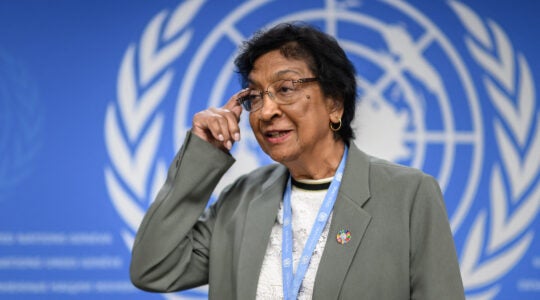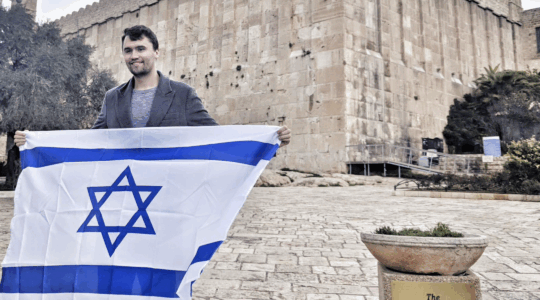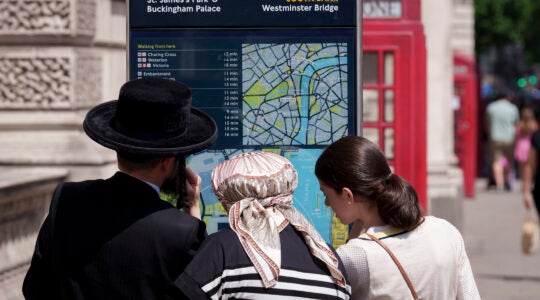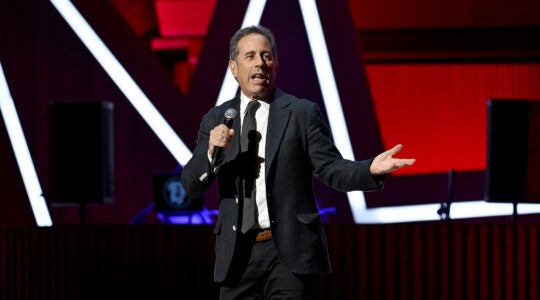TEL AVIV (JTA) — Natan Sharansky has presented what could be a historic proposal to add a space for egalitarian prayer to the Western Wall.
Israeli religious pluralism activists, however, fear that the proposal will take years to implement and could face roadblocks that prevent it from coming to fruition.
The proposal, first reported by the Forward, would expand the current Western Wall Plaza, currently divided into men’s and women’s sections, to allow a space where men and women can pray together. The plaza would expand to include Robinson’s Arch, an archaeological park adjacent to the Wall but currently divided from the rest of the plaza by a bridge. Egalitarian prayer is allowed at the site.
Sharansky presented the plan on Tuesday in New York to the rabbinical Cabinet of the Jewish Federations of North America. Leaders of Orthodox, Conservative and Reform Jewry have expressed their willingness to go along with the proposal.
Upon his return to Israel this week, Sharansky will present the plan to Israeli Prime Minister Benjamin Netanyahu.
Sharansky, chairman of the Jewish Agency for Israel, was asked last year by Netanyahu to formulate a plan to change prayer regulations at the Wall. The request came after rising calls among Conservative and Reform Jews to allow for non-Orthodox prayer in the plaza and several high-profile arrests of female activists at the Wall.
Sharansky’s plan, however, may encounter obstacles from the Israeli government, as well as from the Islamic Waqf, which administers Muslim holy sites on the Temple Mount.
“I think it’s very ambitious,” said Lesley Sachs, director of Women of the Wall, which holds monthly women’s prayer services at the Wall. “We haven’t seen the plan, but we’re talking about a very ambitious endeavor that will take a long time to implement.”
In order to allow for egalitarian prayer at the Wall, the Israeli government will have to change a 1981 ordinance that prohibits any Jewish practice which deviates from “local custom.” At the Wall, local custom is determined by Western Wall Rabbi Shmuel Rabinowitz, a haredi Orthodox leader who has opposed any change to the status quo.
The current ordinance has led to the arrest and detention of Women of the Wall for singing at the Wall and wearing prayer shawls. Sachs is concerned that until the plan is implemented, her group will continue to face arrests and detentions.
Rabinowitz in a statement offered approval for Sharansky’s plan in order to stop the Wall from “becoming a battlefield between one group of extremists and another.” Liberal activists, however, think the battle will continue.
“Sharansky means well and clearly his attempt to bring about a peaceful compromise is praiseworthy,” said Uri Regev, the head of Hiddush, a religious pluralism nonprofit. “But it will take many years in which the conflict will continue because the Women of the Wall will insist on their right to maintain their practices.”
It’s unclear whether Israel’s governing coalition will approve a change to the ordinance that allows for the new prayer section and under whose authority the new section would fall. The Western Wall Heritage Foundation, an Israeli government-funded body run by Rabinowitz, controls the plaza now, but Rabinowitz has been hostile to egalitarian groups. And because Robinson’s Arch is an archaeological site, construction there could take months to be approved.
The biggest obstacle to the plan, however, may come from the Waqf, which has opposed Israeli construction at the Temple Mount. The Waqf has protested Israel’s right to make decisions there because the Temple Mount is located in eastern Jerusalem, which the Palestinians claim as their capital.
In 2011, the Waqf fiercely opposed Israel’s closing of the Mughrabi Bridge, which provided an entrance to the Temple Mount for Muslim worshipers. The bridge cuts between the current plaza and Robinson’s Arch and would have to be moved to accommodate Sharansky’s plan.
JTA has documented Jewish history in real-time for over a century. Keep our journalism strong by joining us in supporting independent, award-winning reporting.





